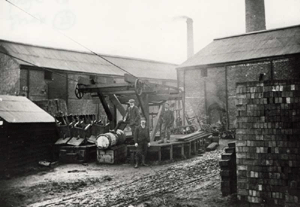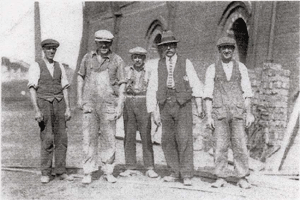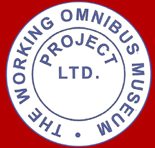|
The Brickworks Museum
Bursledon Brickworks was
founded in 1897 by the Ashby family. The Ashbys
were partners in Hooper & Ashby, successful
builders merchants in Southampton. They also
made bricks. The first brickyard was at
Chandlers Ford but when an opportunity to start
making bricks at Bursledon arose they jumped at
it. There was abundant clay at the new Bursledon
site and very good transport links by both rail
and river.
 The
clay was originally dug by hand in pits close to
the buildings. The clay pits were deep - nearly
40ft - and very extensive. The clay was brought
back to the factory using narrow gauge railway
wagons but eventually the pits were too far away
for this to be practical. Mechanised digging
started in the 1930s. The
clay was originally dug by hand in pits close to
the buildings. The clay pits were deep - nearly
40ft - and very extensive. The clay was brought
back to the factory using narrow gauge railway
wagons but eventually the pits were too far away
for this to be practical. Mechanised digging
started in the 1930s.
As time passed the clay was worked out further
and further away, finally being brought to the
works on a overhead cable system from the clay
pits, see the picture at left. The lakes that
were formed by clay extraction are now part of
the Swanwick Nature Reserve.
The original 1897 works
(the southern complex) was added to in 1903 with
the addition of the northern complex. This was
further extended in 1935. With the extra
capacity, the brickworks was producing in excess
of 20 million bricks a year. They were one of
the main producers of bricks in the region.
Bricks were made during the Great War and the
Second World War. Brick making was considered a
reserved occupation but production was dropped
to a lower level and the War Office
requisitioned parts of the site during both
wars. After the Second World War the family
business was amalgamated with the Sussex and
Dorking Brick Company which in 1959 became
Redland Holdings Ltd.
The site finally closed in 1974 for a number of
reasons, the M27 motorway split the site in two,
the clay was becoming very expensive to extract.
However, probably the main reason was the
introduction of the Health and Safety at Work
Act. What makes the Brickworks so unusual is the
fact that they were not updated during their
working life. Turning them into a modern plant
that could meet the current safety requirements
would have been almost impossible. The factory
slowly ran down, first to go were the clay
diggers and last the kiln burners. Eventually
the last kiln chamber was emptied and a new
chapter for the history of the factory started.
The site buildings were saved from demolition by
the Hampshire Buildings Preservation Trust. The
southern section of Bursledon Brickworks which
houses the brick kiln, chimney, drying sheds,
boiler and engine house are
Grade II*
listed, this now forms The Brickworks
Museum. 
The northern section was demolished and the land
was acquired by
National Air Traffic Services.
NATS operate the London Area Control Centre and
London Terminal Control Centre.
As site owners, they have provided funding for
the
Swanwick
Lakes Wildlife Reserve project managed by the
Hampshire and Isle of Wight Wildlife Trust.
Volunteers with the help of part time ‘staff’,
they help with managing the museum. The
volunteers carry out most of the restoration
work and help to staff the site when the museum
is open. The museum is completely independent
and relies on visitors for its income. In
addition it has received substantial grants from
the Heritage Lottery Fund.
The Museum is open from April until October each
year and usually holds special events at least
once per month. For more information visit
The Brickworks Museum website.
 |


 The
clay was originally dug by hand in pits close to
the buildings. The clay pits were deep - nearly
40ft - and very extensive. The clay was brought
back to the factory using narrow gauge railway
wagons but eventually the pits were too far away
for this to be practical. Mechanised digging
started in the 1930s.
The
clay was originally dug by hand in pits close to
the buildings. The clay pits were deep - nearly
40ft - and very extensive. The clay was brought
back to the factory using narrow gauge railway
wagons but eventually the pits were too far away
for this to be practical. Mechanised digging
started in the 1930s. 
